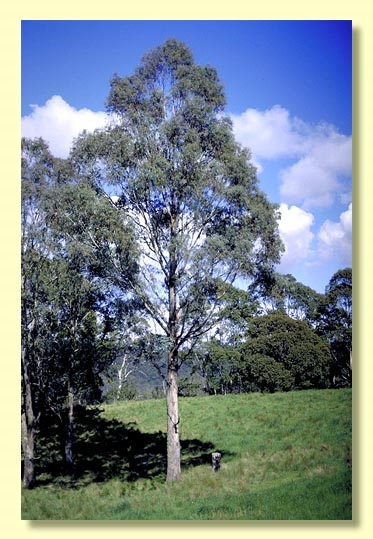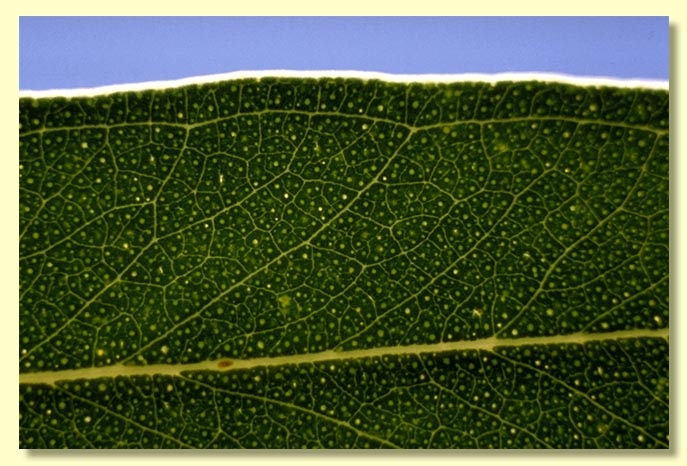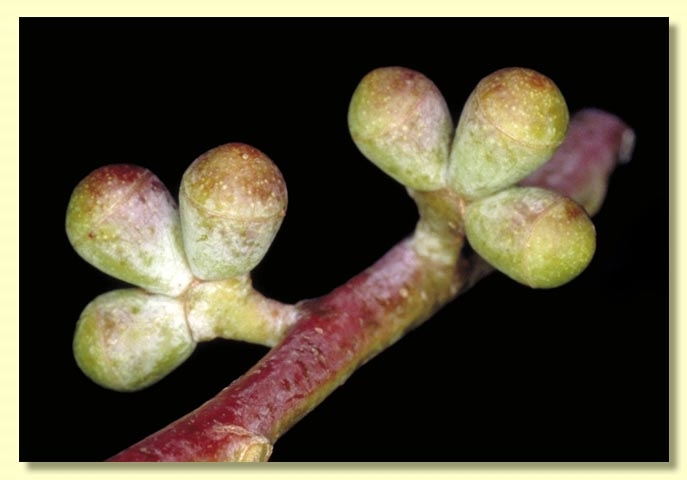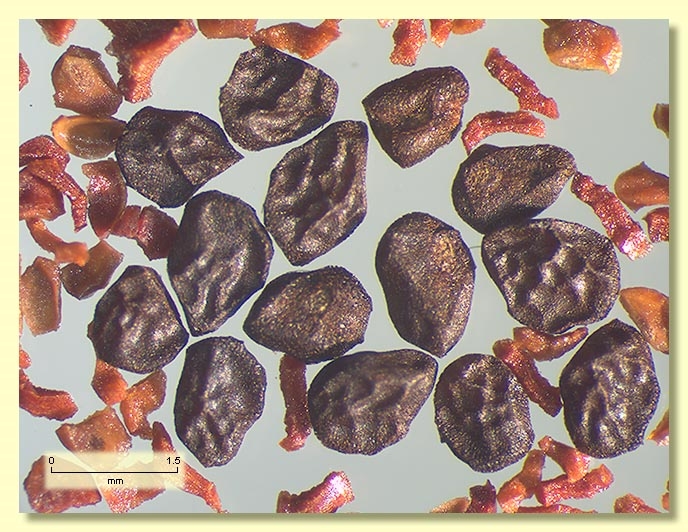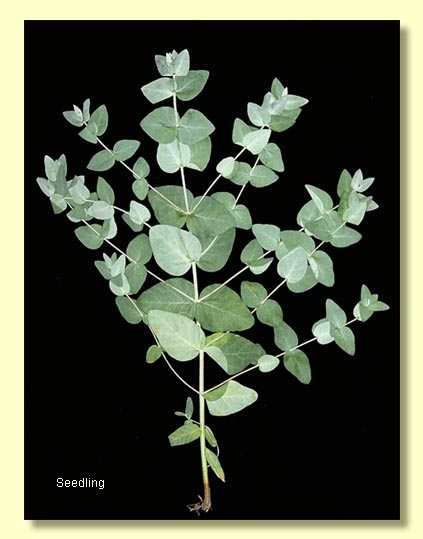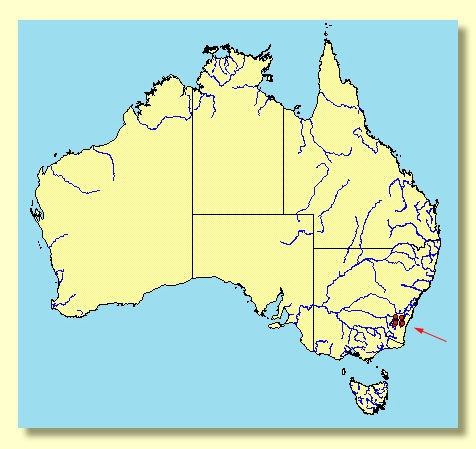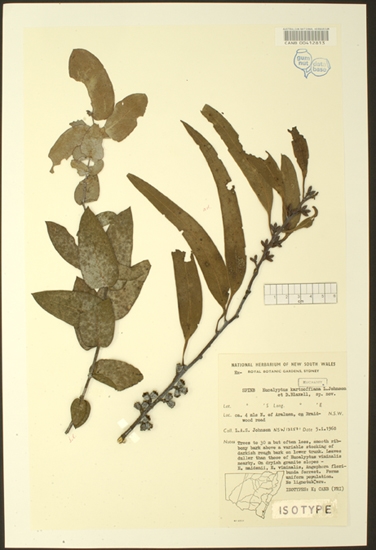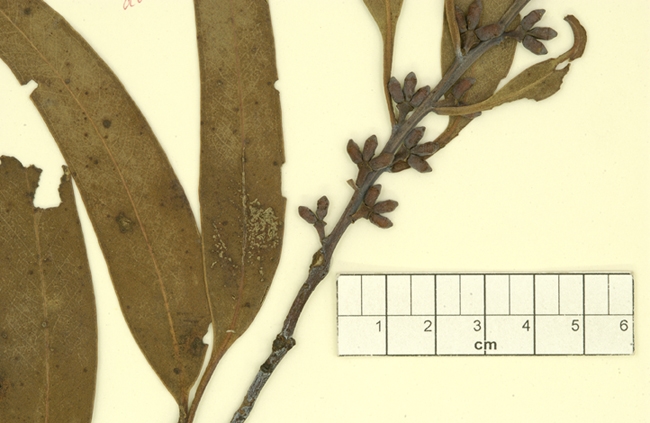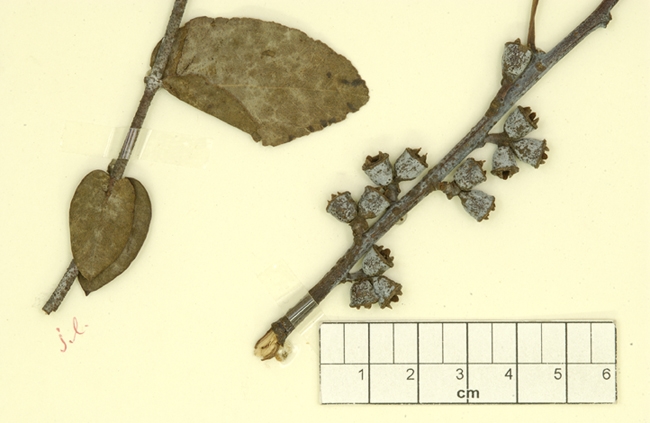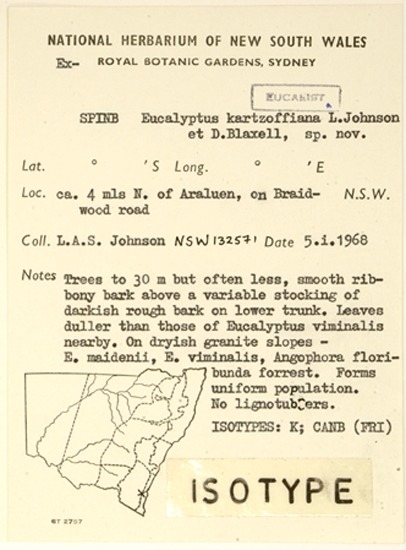Euclid - Online edition
Eucalyptus kartzoffiana
Eucalyptus | Symphyomyrtus | Maidenaria | Euryotae | Confines
T: c. 4 miles [6.5 km] N of Araluen (on Braidwood road), NSW, 5 Jan. 1968, L.A.S.Johnson NSW 132571; holo: NSW; iso: CANB.
Bark rough on part or most of trunk, fibrous or box-type, grey or grey-brown; smooth bark white, cream, brown, grey or green, occasionally with with horizontal black scars, commonly with long ribbons of decorticated bark in the crown; branchlets often glaucous.
Juvenile growth (coppice or field seedlings to 50 cm): stem rounded or square in cross-section, glaucous, warty; juvenile leaves opposite and sessile for many pairs, cordate or ovate, 4.5–6.5 cm long, 1.5–4.5 cm wide, margin sometimes crenulate, glaucous.
Crown often consisting of alternate, petiolate, broadly lanceolate intermediate leaves and adult leaves.
Adult leaves alternate, petiole 1–4.1 cm long; blade falcate to lanceolate or narrowly lanceolate, 8–26.5 cm long, 1.2–3.6 cm wide, base tapering to petiole, concolorous, dull, green to blue-green to glaucous, side-veins usually greater than 45° to midrib, moderately reticulate, intramarginal vein parallel to and remote from margin, oil glands mostly island.
Inflorescence axillary unbranched, peduncles 0.2–0.5 cm long, buds 3 per umbel, sessile. Mature buds cylindrical, 0.5–0.6 cm long, 0.4–0.5 cm wide, green to yellow or creamy, often glaucous, often angled longitudinally, scar present, operculum rounded to conical, stamens inflexed, anthers cuboid to oblong, versatile, dorsifixed, dehiscing by longitudinal slits (non-confluent), style long, stigma blunt, locules 3 or 4, the placentae each with 4 vertical ovule rows. Flowers white.
Fruit sessile, campanulate, 0.4–0.6 cm long, 0.4–0.9 cm wide, glaucous, weathering non-glaucous, disc raised-convex or oblique, or level, valves 3 or 4, strongly exserted.
Seeds dark brown or grey to black, 1.5–2.5 mm long, ovoid or flattened-ovoid, often pointed at one end, strongly lacunose, dorsal surface smooth, hilum ventral.
Cultivated seedlings (measured at ca node 10): cotyledons bilobed; stems rounded in cross-section, glaucous, warty; leaves opposite and sessile for many nodes, cordate, 3–6.5 cm long, 2–4.2 cm wide, amplexicaul, margin entire, apex rounded to pointed, glaucous.
Flowering has been recorded in February.
A medium-sized tree of very restricted distribution on the eastern side of the Southern Tablelands of New South Wales, in the vicinity of Majors, Bell and Araluen Creeks, south-east of Braidwood, on granite-derived soils.
One of many species with three buds, E. kartzoffiana may superficially resemble E. globulus subsp. maidenii with which it grows but is distinguished by the smaller, ovate juvenile leaves, the three-budded inflorescences (7-budded in E. globulus subsp. maidenii), the short peduncles, cylindrical buds and campanulate fruit. Lower branches in the crown of E. kartzoffiana may retain galucous, broadly lanceolate intermediate leaves.
Eucalyptus kartzoffiana belongs in Eucalyptus subgenus Symphyomyrtus section Maidenaria, a large group of species more or less restricted to south-eastern Australia, characterised by bilobed cotyledons, simple axillary inflorescences, buds with two opercula, stamens with versatile anthers and flattened seeds with a ventral hilum. Within this section, E. kartzoffiana stands alone in series Confines, being morphologically somewhat inbetween series Compactae (E. smithii, E. badjensis) and series Globulares (9 species including E. nitens, E. globulus and E. cypellocarpa), having some features in common with each series.
Eucalyptus kartzoffiana is listed as "Vulnerable" under the Australian Government Environment Protection and Biodiversity Conservation Act 1999 (EPBC Act). Further information may be found at this web address:
http://www.environment.gov.au/cgi-bin/sprat/public/sprat.pl

